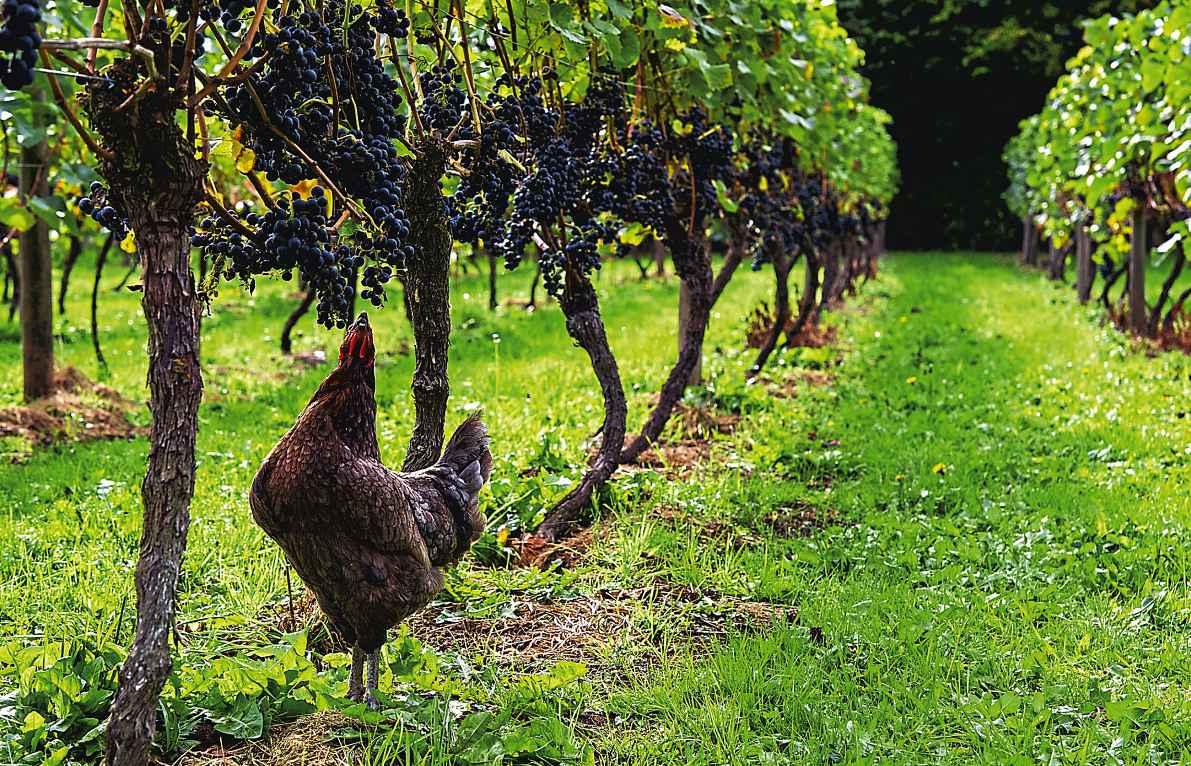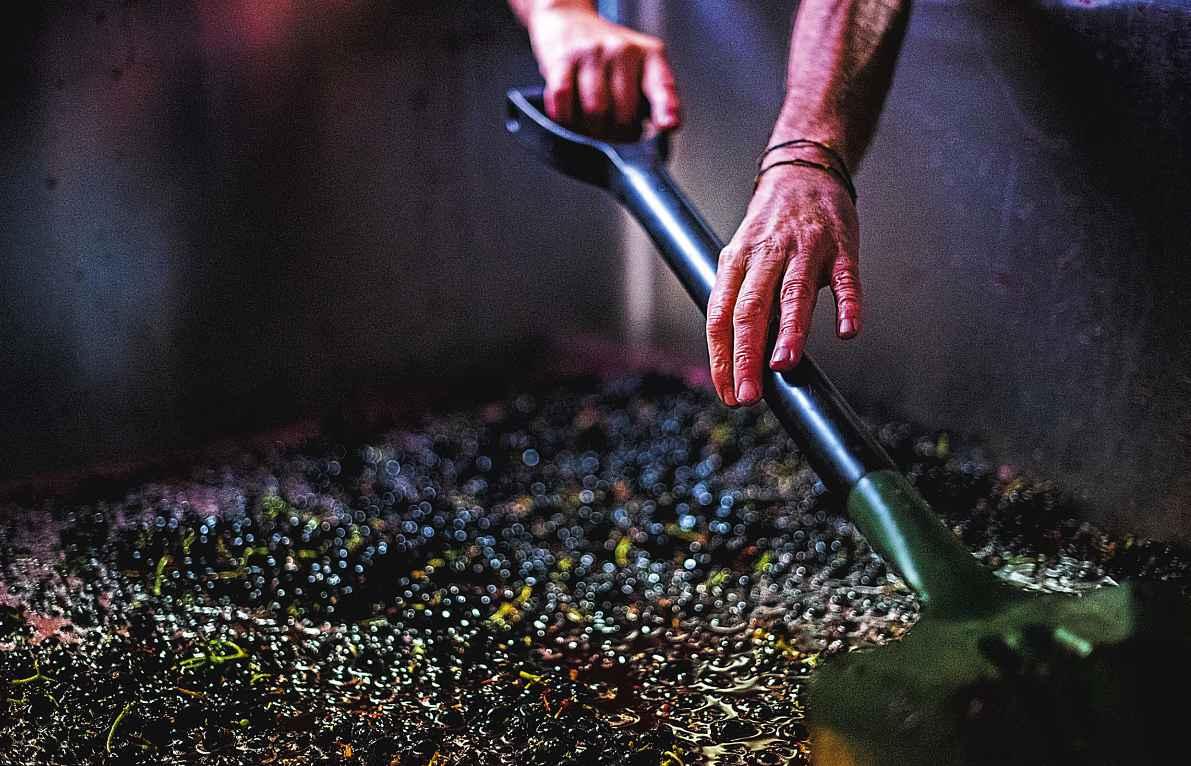
3 minute read
WARM TO AN ENGLISH WINE
English wine is enjoying amuch celebrated renaissance period. The top sparkling wines have been competing on aglobal stage for some time now and each year,in the good ones anyway,the still wines are getting better and better
As the climate warms, vines feel more and more at home in English conditions but there is still alot of work for vineyard managers to do to prevent disease in the vines and loss of fruit throughout the growing season. Warding off late frosts, rain at the wrong time, too much or too little of all weather is all part of theritual and luck that goes into producing wine in England.
At Commonwoodthey choose to take afar more natural approach to their vineyard management and winemaking that many others,bucking the trend against more interventionist practices. Many vineyards will choose to spray the vines and use other measures to help them along their way to abumperharvest.
The vines were first planted just after the turn of themillennium by Alan Goddard and since then the vines are tended with the least intervention possible using organic practices.
What is criticalfor vines growing in North Shropshire, and in factanywhere this far north, is to ensure constant airflow around the vines and the bunches of grapes. This is to avoid mildew and in the worst cases rot. This is achieved through pruning and strong canopy management throughout the summer, making sure there are enough leaves to photosynthesise, but also allow the vine to put as much energy as possible in to producing plump bunches of healthy grapes. Grass between the rows of vines is also regularly mown to reduce humidity
By the end of summer, Commonwood’s rows of vines display perfect layers, green canopy tops, and right there at picking height, bunches of grapes. The layers are testament to shot selection at pruning time. At Commonwood they’re aiming for vertical shoots to make their way up and along the trellis, acycle thatisrepeated each vintage when the vine goes dormant in winter, before being pruned ready for growing during spring and summer
The lifecycle of the vineyard is never ending. It is often said that between the spring equinox and the summer solstice it’s about plant growth.Then from the summer solsticeuntil the autumn equinox it’s about thefruit. Between the autumn and back again to the spring equinox the vines are largely dormant.
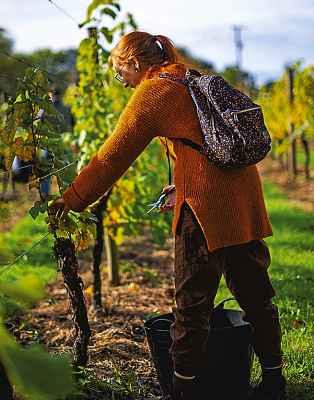
The vines themselves are made up of anumber of German varieties that are well suited to English conditions. The 3,500 vines areportioned up on a one third red and two thirds white ratio. Rondo, Regent and Dornfelder on the red side, although the Rondo is generally used to make rosé wine, Phoenix to make the whites. With some of the vines now more than 20 years old, they are well in to their productive life and they have recently been joined in the vineyard by some new Pinot Noir vines. These vines are now busily establishing themselves before the fruit can be harvested in acouple of years’ time, adding another stringtothe bow of the vineyard.
Alan is now very ably assisted by a number of volunteers including Robin Nugent and his team from Shropshirebased wine merchants Iron andRose, who also run the Glou Glou and Petit Glou wine bars in Shrewsbury.The whole Iron and Rose team get involved in thewhole process from vine to glass, from pruning to pouring Commonwood wines into the glasses of drinkers in their bars –atvery reasonable prices, Imight add.
The wines themselves are fine examples of low intervention English wines. Very natural in feel and taste, informal in approach and generally low in alcohol. Since the early days of the vineyard at Commonwood they haven’t just grown grapes, they havemade the wine as well.
ForRobin and theGlou Glou team this is about gaining practical handson knowledge of winemaking which in turn can be passed on to customers whoenjoy the conversation and advice that independent wine merchants and specialist wine bars offer Winemaking starts as soonasthe grapes are picked. Each year Alan relies on his experience as an engineer to prepare the tanks and equipment essential for the process. The characterful fleet of machines and contraptions crushes and destems the grapes, before aseriesoftanks and pumps are used during fermentation and months later bottling and drinking
From the rows of vines, the grapes don’t travel any further than to the edge of the vineyard to the winery.After crushing and destemming and the whites are pressed, it’s on to fermentation. The red wines are fermented in an old milk tank from anearby dairy farm. The winemaking process is then slightly different for red, white and sparkling wines but the fundamentals are the same –ferment thejuice using naturally occurring yeast and the sugarinthe juice to create alcohol for acouple of weeks. Then comes malolactic fermentation, maturation, fining, filtration and racking. All in all about 18 months for the red wines, alittle quicker for the whites and longer for the sparkling wines which are taken away for finishing off using specialist equipment.
The whole range of wines extends to red and white still wines, and then to a sparkling rosé and white wines. They are all available from Iron and Rose, Glou Glou and Petit Glou, all in Shrewsbury, Moyden’s Cheese in Newport market and they are also on the wine list at new vegan restaurant Nooch which is alsoin Shrewsbury
So what’s next for Commonwood?
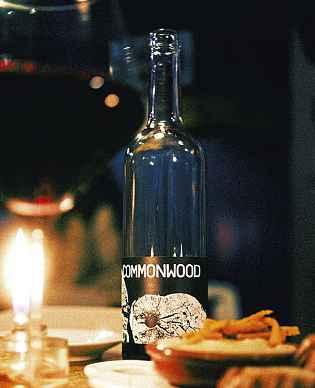
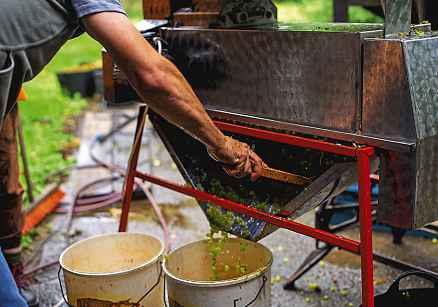
The team are really keen to open up the vineyard to thecommunity to come and enjoy,tolearn about and try the wines so there are plans afoot for events throughout the summer and, of course, there are more wines to release as well.
